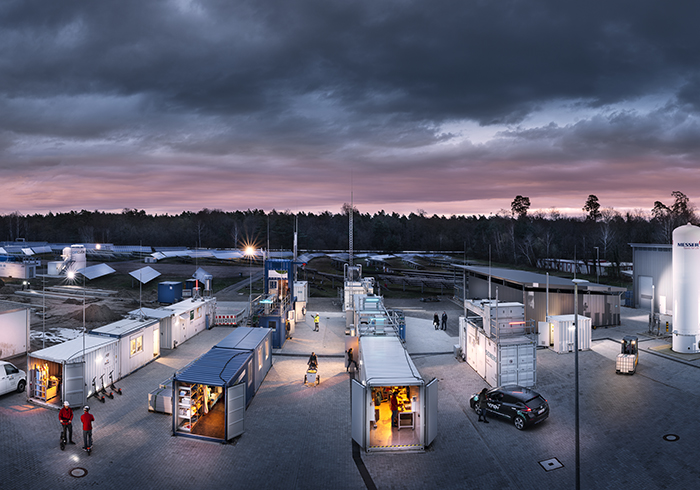KIT Energy Center provides vital momentum for Transformation
The climate and energy crises show: The transformation of the energy system to a sustainable and reliable supply must move forward faster. Research, teaching, and innovation at KIT contribute to this, with their focus on energy efficiency, renewable energies, storage and grids, electromobility, and international research cooperation. With 1800 scientists and technical staff, the KIT Energy Center is one of the largest energy research centers in Europe. The following are examples of some of the work with which the KIT Energy Center is driving forward the transformation of our energy systems.
Energy Lab 2.0.
A unique network of facilities on KIT Campus North links electrical, thermal, and chemical energy sources as well as new information and communication technologies. The research work aims to improve the generation, distribution, storage, and use of electricity, heat, and fuels, thus laying the foundations for a reliable, affordable, and environmentally compatible supply.
Synthetic methane from biomass.
The bioliq® plant at the Karlsruhe Institute of Technology (KIT) can produce a synthetic gas from carbon monoxide, carbon dioxide, and hydrogen, among other things, from residual materials from agriculture and forestry. KIT researchers have succeeded for the first time in producing methane from this, which, after appropriate processing, could be fed directly into the German natural gas grid and replace fossil fuels.
Efficient production with catalysts.
To manufacture products economically and sustainably, raw material and energy requirements as well as by-products must be reduced, for example, by using catalysts that influence the speed of a chemical reaction. KIT researchers have now developed a flexible measuring chamber concept that facilitates the investigation of reactions on catalysts closer to the actual operating conditions.
Marble-look solar panels.
Many homeowners are hesitant about installing photovoltaic systems. Apart from the high initial costs, aesthetic reasons could play a role. KIT researchers have developed solar cells made of perovskite semiconductors, which can be designed in different colors and patterns to imitate the appearance of well-known building materials. In addition, they are efficient and have low production costs.
Geothermal energy for the heat transition.
Deep geothermal energy provides consistent and weather-independent local energy and occupies little space in settlements. A joint roadmap by institutions of the Helmholtz Association, including KIT, and the Fraunhofer-Gesellschaft shows that deep geothermal energy, together with high-temperature storage and mine water utilization, could cover more than a quarter of Germany's heat demand. This requires clear expansion targets, large-scale geological exploration, and investments in key technologies.
Fully automated laboratory for batteries.
Building batteries around the clock, analyzing thousands of interfaces, autonomously evaluating the results with the help of artificial intelligence (AI), and then immediately planning the next experiment: A new facility at the Cluster of Excellence POLiS handles materials development fully automatically and digitally. This accelerates the development of new high-performance batteries - essential for the energy and mobility revolution.
A small element with great potential.
Hydrogen can replace fossil fuels, serve as a storage medium for electricity from renewable sources, and link the various energy sectors. In addition, it can be used to produce specialty chemicals. KIT researchers are working on a wide range of hydrogen solutions, for example for energy-intensive industrial processes or for heavy-duty transport.
From harmful greenhouse gas to valuable raw material.
As part of the NECOC joint project, an experimental plant is being built at KIT for the conversion of carbon dioxide (CO2) from ambient air into solid carbon. This results in two options: If the carbon is stored permanently, so-called negative greenhouse gas emissions are produced. When used as a valuable material, the process forms an important building block for a post-fossil raw material supply.
Continuing education for industry.
As the KIT Technology Business School, the HECTOR School of Engineering and Management supports companies on their way to climate neutrality. The latest research results from KIT are incorporated into the continuing education courses offered on a part-time basis and are prepared for industry in an application-oriented manner.
The strategy of the KIT Energy Center involves researching a broad range of options to increase the pace of the energy transition. Thanks to the cooperation of researchers from different disciplines, it provides energy solutions from a single source and acts as a competent partner for politics, industry, and society.
Dr. Wolfgang Breh (Managing Director)
Hermann-von-Helmholtz-Platz 1
76344 Eggenstein-Leopoldshafen
Tel.: +49 (0)721 608-25540


